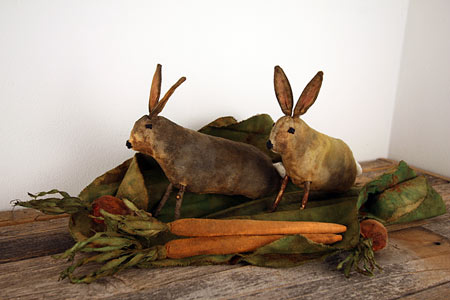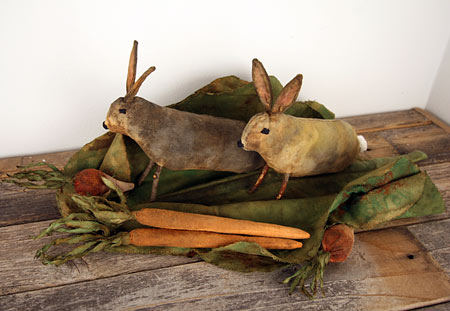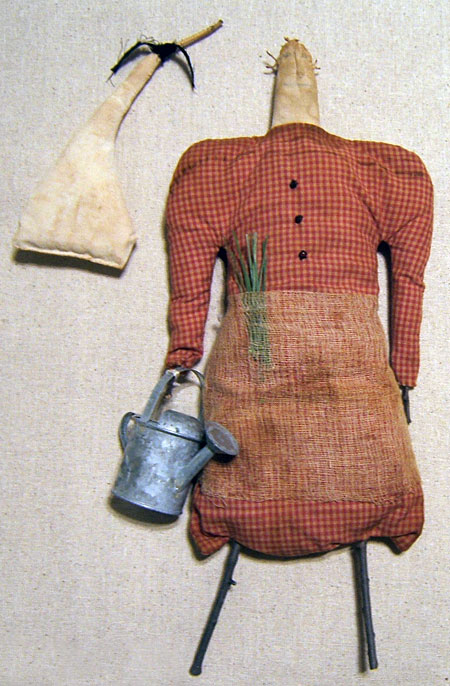Here is my latest creation – a pair of primitive cupboard sheep.


Both sheep are made of muslin stuffed with natural fibers. The woolly sheep is covered in vintage cotton batting and the brown sheep is heavily coffee stained. Both sheep have painted black heads, vintage cotton batting tails, and stick legs. Each sheep also wears a poem printed on heavily stained, torn paper that has been attached with two pieces of twine. The brown sheep’s poem has some dried flowers tucked in as well, and he wears a piece of twine adorned with a rusty bell around his neck. Kentucky Primitives gets credit for the design for this primitive pair.
Each sheep is for sale separately now on Old World Primitives.










